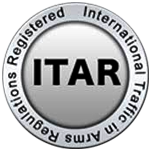6 Tips to Choose the Best Low Temperature Wire for Your Global Supply Chain
In today's increasingly interconnected world, ensuring efficiency and reliability throughout your global supply chain is paramount, especially when it comes to choosing the right materials. One crucial component that often gets overlooked is the Low Temperature Wire. As industries expand into regions where temperatures can dip significantly, selecting the appropriate wire becomes essential not only for performance but also for safety and compliance. This blog will provide you with six practical tips to help navigate the complexities of selecting the best Low Temperature Wire for your specific needs. By understanding the key factors and characteristics of these wires, you can enhance your supply chain's resilience and ensure that your operations run smoothly, regardless of the environmental challenges they may face.
Understanding the Importance of Low Temperature Wire in Global Supply Chains
In today's global supply chains, the role of low temperature wire cannot be understated. As industries strive to enhance efficiency and sustainability, the materials they choose are critical to ensure reliability in extreme conditions. Low temperature wire is specifically designed to maintain performance in frigid environments, preventing failures that could disrupt operations. This is particularly essential in sectors like aerospace, automotive, and energy, where temperature fluctuations are commonplace and can significantly impact equipment and safety.
Understanding the significance of low temperature wire also involves recognizing its applications. These wires are made from specialized materials that resist brittleness and maintain flexibility when exposed to cold. Such properties are not just advantageous for operational efficiency; they are vital for compliance with industry regulations that mandate stringent performance standards under varying thermal conditions. As supply chains grow more complex and globalized, selecting the right low temperature wire becomes a crucial component in safeguarding the integrity of products and systems across diverse environments.
Key Factors to Consider When Selecting Low Temperature Wire
When selecting low temperature wire for your global supply chain, there are several key factors to consider to ensure reliability and performance in extreme conditions. First and foremost, it's crucial to examine the wire insulation material. Different materials, such as PVC, Teflon, or silicone, each have varying temperature ratings and mechanical properties. For ultra-low temperatures, materials that maintain flexibility and resist cracking are paramount to prevent failure during operation.
Another important aspect to consider is the wire's gauge and current rating. Thicker wires can handle more current but may become less flexible in cold environments. Understanding the specific requirements of your application—such as load demands and installation conditions—will help guide you in choosing the appropriate gauge. Additionally, reviewing any regulatory standards that apply to your industry is essential, as compliance with safety regulations can impact both performance and liability.
Lastly, sourcing from reputable manufacturers who provide detailed specifications and testing data can make a significant difference. Ensuring that the wire meets the necessary quality standards and has undergone rigorous testing for low temperature use will not only enhance the reliability of your supply chain but also lead to cost savings in the long run by reducing the risk of breakdowns or recalls.
How to Assess the Quality and Performance of Low Temperature Wire
When selecting low temperature wire for your global supply chain, assessing the quality and performance is paramount. First, consider the materials used in the wire construction. High-quality insulation materials, such as fluoropolymers or silicone rubber, can ensure optimal performance in extreme conditions. Additionally, the conductor materials should be examined; copper wire is often preferred due to its excellent conductivity and resilience, but specialized alloys may be necessary for specific applications.
Next, evaluate the wire's specifications against your operational needs. Look for performance metrics such as flexibility, temperature rating, and resistance to environmental factors like moisture and chemicals. Manufacturer certifications and testing results can also provide insight into the wire's reliability. Comprehensive testing, including thermal cycling and mechanical stress tests, will further confirm the wire's capability to perform under low-temperature conditions without degrading. By paying close attention to these factors, businesses can select wires that not only meet but exceed their supply chain performance requirements.
Best Practices for Sourcing Low Temperature Wire Globally
When sourcing low-temperature wire globally, it is crucial to consider a few best practices to ensure quality and compliance. First, always verify the certifications of the wire manufacturers. Look for international standards such as UL, CE, and ISO to ensure that the products meet the necessary safety and performance requirements. This step not only ensures quality but also mitigates risks associated with using subpar materials.
Another essential tip is to assess the supplier's production capabilities and reliability. Establishing a relationship with manufacturers who have a proven track record in producing low-temperature wire can lead to better product consistency and timely deliveries. Conducting audits or requesting samples for testing can help in evaluating the manufacturer's ability to meet your specific needs effectively.
Lastly, consider the logistical aspects of your supply chain. Choosing suppliers that are geographically closer to your market can reduce shipping times and costs. Furthermore, keeping communication open regarding lead times and inventory levels can help streamline the sourcing process, ultimately supporting an efficient global supply chain.
Evaluating Supplier Reliability and Support for Low Temperature Wire Choices
When selecting low temperature wire for your global supply chain, evaluating supplier reliability and support is crucial. Reliable suppliers not only provide high-quality materials but also ensure that their offerings meet industry standards for performance under extreme conditions. It's essential to assess their track record, looking into past customer experiences and the consistency of their products. A supplier with a history of reliability can mitigate risks associated with supply chain disruptions, particularly in sectors that require specialized wiring solutions.
In addition to reliability, the level of support offered by suppliers can significantly impact your operations. Strong communication channels and responsive customer service are crucial when navigating any challenges that may arise with low temperature wire applications. This is especially pertinent in today's dynamic market, highlighted by the recent discussions surrounding energy choices in Michigan, emphasizing the necessity for adaptable and reliable suppliers. Choosing a supplier that provides robust technical support and industry expertise can enhance project outcomes and foster long-term partnerships that are vital in a competitive global landscape.
6 Tips to Choose the Best Low Temperature Wire for Your Global Supply Chain
| Criteria | Importance Level | Supplier Support Rating | Delivery Reliability | Temperature Rating Range |
|---|---|---|---|---|
| Material Quality | High | 4/5 | 95% | -40°C to +105°C |
| Certification Compliance | Medium | 5/5 | 90% | -50°C to +120°C |
| Customer Service | High | 4/5 | 92% | -45°C to +90°C |
| Lead Time | Medium | 3/5 | 85% | -40°C to +110°C |
| Cost Efficiency | High | 4/5 | 88% | -50°C to +100°C |
NORTH EASTON MACHINE • 218 Elm Street • North Easton, MA 02356 • 508-238-6219

